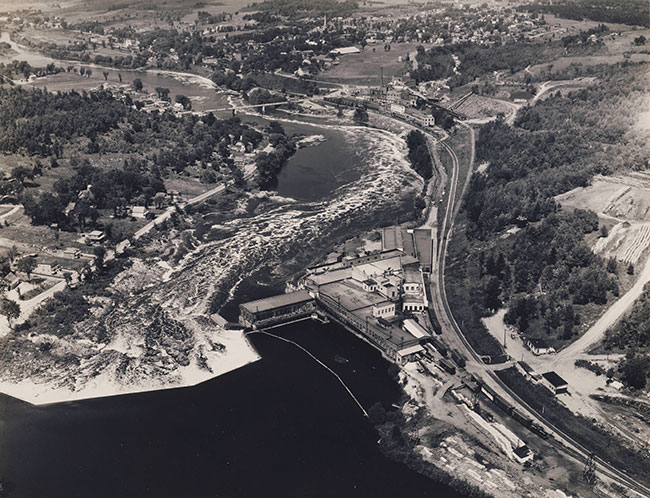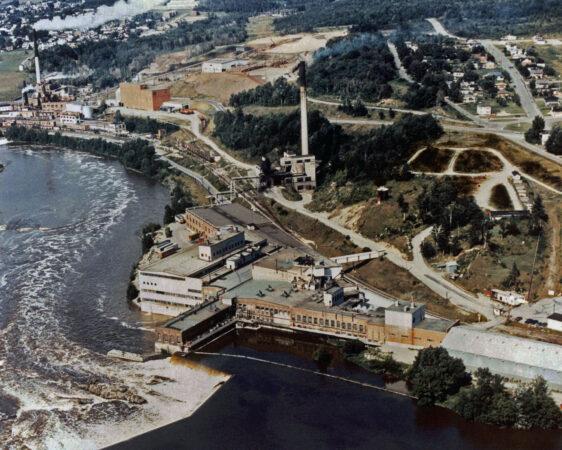
Features
Operations & Management
Paper
Pulp
Tales of transition: Domtar’s story
May 8, 2023 By Sukanya Ray Ghosh
 The Domtar Windsor mill in 1950 (Photo: Domtar)
The Domtar Windsor mill in 1950 (Photo: Domtar)
A major contributor to the Canadian economy, the pulp and paper industry has endured through years of drastic changes in the market. It was a leading global producer of newsprint paper once upon a time, as well as a major pulp producer. With the evolving times, Canadian mills have embraced the needs of the hour. Today, the focus is on pulp and paper alternatives to plastics, packaging products for the highly demanding e-commerce industry and adoption of sustainable practices.
In this special anniversary feature, five stakeholders of the Canadian pulp and paper industry share how they have evolved and their vision for the future.
This is Domtar’s story.

Domtar’s Windsor Mill in 1985 (Photo: Domtar)
Domtar, as a company, is celebrating its 175th anniversary this year. With its roots in Europe, the company first established its operations in Canada in 1903. Over the years, it diversified its portfolio, adding paper and packaging to the mix.
In paper, Domtar has adapted to the market to ensure its long-term success, matching capacity and demand. In pulp, strategically combining technical insights from Engineered Absorbent Materials (EAM) with its pulp business allows the company to deliver a full suite of absorbent materials for hygiene products globally. The company is also entering the packaging market with the conversion of its Kingsport mill to high-quality containerboard.
In Canada, Domtar’s Windsor Mill has been in existence since 1864. The initial unit built in Windsor by Angus & Logan was a soda pulp mill, the first wood-pulp mill in the country and the second on the continent, shares the Domtar team. Other units were added through the years as the operations evolved and expanded. In the 1980s, Domtar decided to build a completely new mill with high-technology systems. The mill today features robots (Automatic Guided Vehicles) to bring paper rolls to the sheeters, an automatic warehouse, several performance monitoring environmental systems and other modern equipment. Domtar had been invested for 35 years to create a safe workplace, to maintain high productivity and to increase the environmental protection.
As with every player in this space, Domtar’s Canadian operations do not remain unaffected by the constantly evolving industry.

Domtar Watopka in early 20th century (Photo: Bernice McAdams Archives)
Katie Zorn, vice-president of marketing, product management and strategic planning at Domtar, says, “Coming out of the pandemic, we see continued decline in demand for communications papers in short-lived, low-value end uses and applications. But we see strong usage, and even resurgence, in high-value applications and important documents that require deep thinking, where there is benefit from physical interaction and continued use. There is no good substitute for paper and print where important information and messages are concerned. We are excited to see more efficient and economical printing techniques and technologies moving forward.”
She further adds, “Another trend is in paper-based packaging, where consumers generally feel that paper is a very sustainable option, especially when it can be easily recycled. We envision more and more paper-based packaging solutions that have new functionality for containing, protecting and preserving everyday items. Paper remains a sustainable choice, easy to use and easy to recycle.”
Print this page